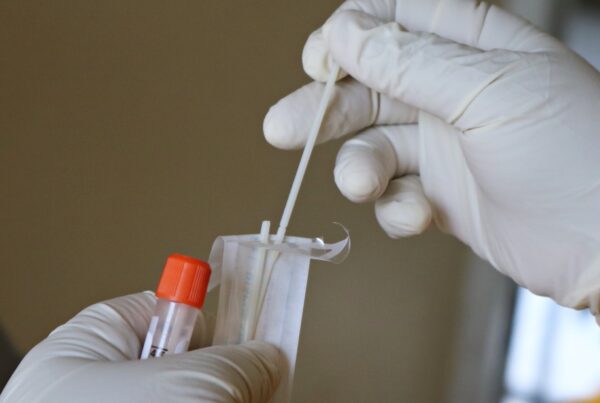The Big Picture
An update on the numbers: The United States has officially passed 8 million confirmed COVID-19 cases, a grim milestone that reminds us we have not gotten past this virus. With surges in multiple states over the past week, North Dakota, Mississippi, and Louisiana have the highest case rates (cases per 1000 people) in the country.
According to NBC News, 7 states reported record single-day case increases. While some of this can be attributed to an increase in testing, many of these spikes are due to an increase in indoor gatherings. Many experts are warning this surge of cases can quickly escalate, with the holiday season just around the corner. With the holidays bringing many families together, health officials warn the public that holiday gatherings can easily become superspreader events. Dr. Megan Ranney, co-founder of Get Us PPE and emergency physician, explains that there are already doctors “sharing stories of their ER’s being overwhelmed, their ICU’s being full, running out of nursing staff because their nurses are getting sick.”
COVID-19 Surge Increases PPE Need
Seven months into the pandemic, critical shortages of personal protective equipment (PPE) continue. Get Us PPE has received nearly 17,000 requests for PPE to date, with over 21.5 million units of PPE requested to fill just one week’s worth of need. The demand has shifted away from hospitals and towards smaller facilities, especially in under-resourced communities. Schools and nursing homes are in need, among other places. Get Us PPE released its September PPE Shortage Index this week. The monthly index gives data and, in this case, testimonials from school nurses about PPE shortages nationwide. One harrowing statistic is that 80% of facilities that registered their need for PPE with Get Us PPE in September were completely out of one or more types of PPE, up from 77% percent in August.
Health Officials Warn of Next Wave
Officials worry that these increasing case rates are evidence of another wave, the wave healthcare experts have been warning the public about for months. Multiple states are reporting worrying signs. For example, in Colorado, seven-day average daily case rates are as high as they were back in May, with hospitalizations rising 37%. In Wisconsin, field hospitals have opened to accommodate the surge of new patients. As a whole, the United States’ daily infection rate is up 14% from last week. These numbers have the nation’s top public health officials concerned. Dr. Anthony Fauci spoke with CNBC, where he stated, “I think we’re facing a whole lot of trouble…we’ve got to turn this around.” Furthermore, Dr. Deborah Birx warned the Northeast was witnessing the early stages of concerning trends. Along with rising case rates, 10 states have seen “record-high hospitalization numbers.” Dr. Ranney also weighed in on this matter, saying, “We are all deeply afraid that this is the beginning of that dreaded second wave… we’re quite afraid for what we are headed into.”
This stark warning comes as the American Academy of Pediatrics and the Children’s Hospital Association reports cases in children have risen 13% in the past week. This comes as many schools have begun hybrid or full in-person learning. Dr. Fauci explains that school can safely reopen if proper social distancing, mask-wearing, and testing measures are in place. But a Get Us PPE survey of over 130 schools, included in the September Get Us PPE Shortage Index, shows that schools in states from Texas to Pennsylvania are in need of PPE. School nurses, in particular, are facing dangerous shortages. In a striking quote, one nurse says “PPE is disposable Our lives are not!”
Masks Can Help Curb the Spike in Cases
A COVID-19 model from the Institute for Health and Metrics and Evaluation (IHME) is predicting death rates will peak in January, with the total death toll reaching 400,000 by February 2021. These numbers come with the concerning data that only 70% of people are wearing masks in public. The IHME is working to raise this number to 95%. Their data shows that if 95% of the population wears a mask in public, the United States can reduce its projected death toll to 315,000 by this February. However, as the Get Us PPE Shortage Index shows, many frontline workers do not have the PPE they need, and people in the most under-resourced communities in the country also lack basic protective equipment.
Nursing Homes Hit Hard by New Case Surge
Unfortunately not a new issue, nursing homes are once again being hit hard by the PPE crisis. A report recently released by the AARP collected data from August 24th to September 20th. It concluded that Maine, the “lowest performic state on this metric” had 60% of nursing homes reporting less than a week of PPE. Throughout the United States, over 25% of nursing homes were lacking PPE. These trends, which are corroborated by the GetUsPPE Shortage Index for September, demonstrate that N95 masks are the most requested supply. The Shortage Index showed that, after respirators (including both N95s and KN95s), disinfecting wipes were the most requested type of PPE, followed by surgical/procedural masks. The need for nitrile gloves is surging from a low in June, and has become the second most requested type of PPE in October so far. In September, Get Us PPE received requests from nearly every state and at least one territory for PPE, and the AARP also stated that all 50 states have reported “some form of personal protective equipment (PPE) shortage” in the past month, all staggering and sobering statistics.
Success Story: “The Elves Indoors” Children’s Book
Much of the news this week has centered around another coronavirus wave, rising death rates, and PPE shortages. But amidst this news are also stories of inspiring individuals using their passions for change. Author and storyteller Michael Sheinbaum decided to write a children’s book showing young children that they can change the world, no matter the circumstance, and he plans to donate a portion of his proceeds to Get Us PPE. As a professional Santa Claus, he chose a Christmas setting for his book. To signify the virus, he created a huge storm that prevented Santa and his elves from delivering presents on Christmas Eve. As the elves problem-solve their way through the situation, Sheinbaum leaves kids with an important lesson: “[you] may not be able to stop or end a pandemic… but [you] can effect change locally.”
This Week At Get Us PPE
Dr. Esther Choo, co-founder of Get Us PPE talks with CNBC about the potential coronavirus trends in the next few months. She explains that the country is in a better position to handle a second wave than it was last spring. Hospitals and healthcare facilities have been preparing physical spaces and protocols for a second wave for months, in hopes of preventing the amount of death the United States saw this Spring. However, Dr. Choo also warns that it is difficult to predict the effects influenza will have on this virus. She explains that in order to prevent influenza and COVID-19 from both heavily impacting Americans, everyone must keep their distance, wash their hands, and wear a mask. “That is the bottom line”, says Dr. Choo. Finally, Dr.Choo brings awareness to the ongoing PPE crisis, stating, “we are still re-using and re-re-using PPE.” She attributes the lack of PPE to complicated supply chains, failure to invoke the Defense Production Act effectively, and a global demand for PPE.
Dr. Shikha Gupta, Vice President of Get Us PPE, sat down with CNBC News to explain the constant need for PPE. She explained that Get Us PPE was only supposed to be around for a few weeks. Instead, seven months later, we are still fulfilling requests from around the world. While supply chains and stockpiles have begun to improve for large hospitals, small healthcare centers are still facing severe problems. Dr. Gupta makes a powerful statement: “Sending people in to work everyday and asking them to do their jobs without the tools they need is not the American way. We should have done better.”
Karina Popovich, founder of Makers for COVID-19 and member of Get Us PPE, was highlighted in Make: So far, Makers for COVID-19 has donated over 82,000 units of PPE, and has delivered PPE to frontline healthcare workers in 30 states and across 8 countries. Makers for COVID-19 is made up of “hobbyists and 3-D printer owners all around the United States and the world.” It is partially through makers like Karina that Get Us PPE is able to continue donating PPE to those who need it the most.
Get Us PPE co-founder Dr. Megan Ranney explained to CBS news the meaning of COVID-19 testing. She explained that testing can be done for a variety of reasons, and on patients who are showing symptoms or asymptomatic. However, “even with negative tests, you still need to wear a mask and social distance,” says Dr. Ranney. This comes as states grapple over the safety of reopening businesses and schools.




